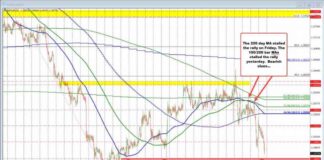Understanding the Current USD Downtrend: Insights from Action Forex
The financial markets have been closely watching the developments in the US economy, particularly after Fed Chair Powell’s keynote speech at the Jackson Hole conference. Powell’s remarks reiterated the Fed’s shift in focus towards balancing inflation and employment concerns. He noted that the risks to inflation have decreased, while the risks to employment have heightened. This change in assessment has led to a growing confidence within the Fed that inflation is on a sustainable path towards the 2.0% target.
The labor market, which was previously characterized by overheating, has now cooled considerably. Despite the rise in unemployment being primarily driven by an increase in labor supply rather than layoffs, the Fed is cautious about further cooling in the job market. Powell emphasized that the current policy rate provides ample room for the Fed to respond to any risks, including the possibility of a weakening labor market.
The market sentiment reflects the possibility of the Fed implementing 50 basis points (bps) rate cuts in the near future. US yields experienced a decline on Friday, with the 2-year yield remaining fragile. While US bond yields have not broken recent lows, they are holding above levels seen during the early August risk-off period. The overall trend for the US dollar continues to be bearish, with the Dollar Index (DXY) closing lower at 100.72.
The Euro gained strength against the USD, testing the 1.12 level, while equity markets responded positively to the prospect of further easing of financial conditions. US indices, including the Nasdaq and S&P 500, saw gains, with the latter closing near its all-time peak. The Eurostoxx 50 also recorded an increase in value.
Market Expectations and Economic Indicators
Looking ahead, the focus shifts to upcoming economic indicators such as US durable goods orders and German Ifo confidence data. The US data gains significance as the Fed places less emphasis on inflation, but the durable goods series is known for its volatility. Market watchers will be keen to see if the decline in US yields slows down, considering the expectations for further easing already priced in.
In Germany and the Eurozone, upcoming inflation data will be closely monitored, with reports scheduled for release later in the week. While German yields have shown a decline, the broader trend of a weakening USD remains intact. Key support levels for the USD are identified at DXY 99.58 and EUR/USD 1.1276.
Central Bank Actions and Global Perspectives
Bank of England (BoE) Governor Bailey’s comments shed light on the UK’s monetary policy stance. Bailey emphasized the need for policy settings to remain restrictive until inflation risks are sufficiently mitigated. The BoE expects inflation pressures to be less persistent than initially anticipated, leading to a more optimistic outlook. While the possibility of back-to-back rate cuts exists, the more likely scenario is a single rate cut in November.
In Brazil, Central Bank Governor Campos Neto highlighted the challenges posed by the country’s tight labor market on inflation control. With consumer prices rising and economic activity picking up, the central bank’s data-dependent approach may result in a higher policy rate if necessary. The central bank’s recent pause in the easing cycle signals a cautious approach to managing inflation.
Market Trends and Analysis
The European Central Bank’s (ECB) rate cut in June has not been followed by additional moves due to stubborn inflation levels. Market expectations for further rate cuts in 2024 are influenced by disappointing US and Eurozone activity data. The US Federal Reserve’s shift towards potential rate cuts has weakened the technical outlook for US yields, with market sentiment leaning towards a 50 bps reduction.
The EUR/USD pair has benefited from the dollar’s loss of interest rate support, with risks of recession and expectations of significant rate cuts driving the pair higher. Key technical levels for EUR/USD are identified at 1.1276, signaling a potential upward trend. Similarly, the EUR/GBP pair has been influenced by the BoE’s hawkish cut, with gradual policy adjustments expected in line with economic data.
As global markets continue to navigate uncertainties and shifting economic landscapes, investors are advised to stay informed and monitor key indicators to make informed decisions. The outlook for the USD remains bearish, with potential rate cuts on the horizon. Central banks worldwide are adopting cautious approaches to policy adjustments, reflecting the delicate balance between inflation control and economic growth.

















